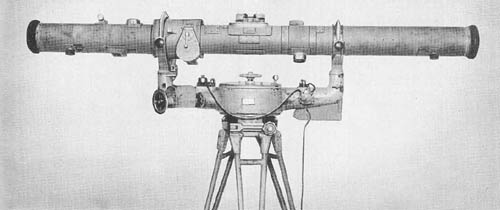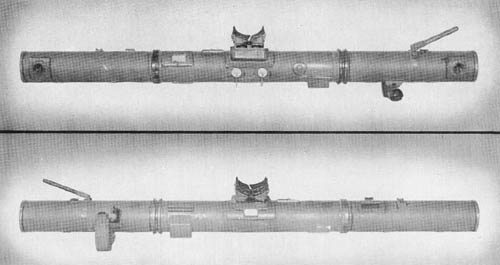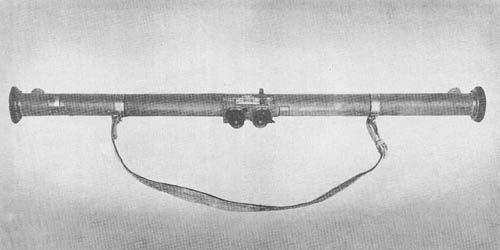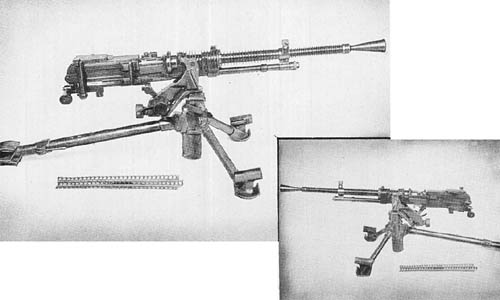
This gun incorporates most of the features of the Model 92 Heavy Machine Gun, but is smaller and lighter. A total weight saving of 41 pounds in the gun and tripod mount is achieved. The barrel of the new gun is considerably shorter than that of the Model 92; therefore, the muzzle velocity is probably lower.
Both guns feed from 30-round strips, but the 01 (1941) uses rimless ammunition. The new gun incorporates the following modifications:
The barrel of the Model 01 may be quickly removed. The flash hider is screwed onto the muzzle, eliminating the knurled locking collar used on the older gun. The gas regulating system is similar to that of the 7.7 mm Model 99 (1939) Light Machine Gun. A smaller oil reservoir is used. A new method of attaching the ejection port cover allows easier access to the receiver which should aid in clearing stoppages. Minor changes in the metal sights have been made. A crank-shaped safety is fitted through the top of the sear housing with its handle at the left rear of the receiver. The new tripod is lighter and has different type spades. It also has a different mechanism for elevating the pintle support above the tripod base. The receiver of the Model 01 is lighter.
SPECIFICATIONS
| Weight (total) | 69.9 lbs. | |
| Weight (without mount) | 34 lbs., 2 ozs. | |
| Weight of mount | 37 lbs. | |
| Weight of tripod | 36.3 lbs. | |
| Length (overall w/flash hider) | 42 3/8 ins. | |
| Length (overall w/o flash hider) | 38 ins. | |
| Sight radius | ||
| Principle of operation | Gas, full-automatic | |
| Feeding device | Metal strips | |
| Capacity of feeding device | 30 rounds | |
| Cooling system | ||
| Ammunition types | Model 92 ball, A.P. and tracer (rimless) | |
| Rate of fire (estimated) | 450-500 r.p.m. cyclic 200-250 r.p.m. effective |
|
| Type of sight | Rear, calibrated from 100 to 2,200 meters. | |
| Weight of barrel | 11 lbs., 6 ozs. | |
| Length of barrel | 23 3/16 ins. | |
| Length of rifling | 22 ins. | |
| Rifling | ||
| Twist | R.H. | |
| Form | ||
| No. of lands | 8 | |
| No. of grooves | ||
| Depth of grooves | ||
| Width of grooves | ||
| Muzzle velocity | ||
| Maximum range | ||
| Effective range | ||
| Type of mount | Tripod | |
| Elevation | ||
| Traverse (total—on arc) | 45° |
Japanese: p. 214.2 (June 1, 1945)
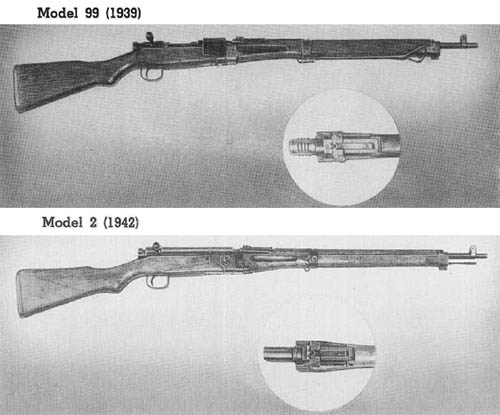
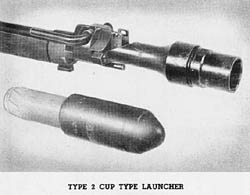 The Type 2, which is patterned after the German grenade launcher of the same type, fits over the front sight of the rifle and has a short rifled barrel. It fires both the
The Type 2, which is patterned after the German grenade launcher of the same type, fits over the front sight of the rifle and has a short rifled barrel. It fires both the 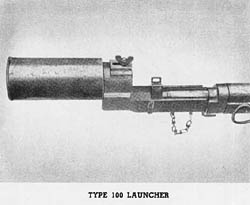 The Type 100 may be used with either the
The Type 100 may be used with either the 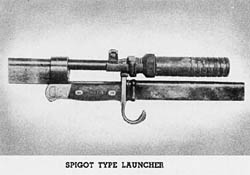 The spigot type launcher, which may be used with either the Type 38 or Type 99 rifle, fires the Type 91, Type 3 H.E., and several types of smoke and incendiary grenades. It consists of a rifled barrel threaded to an adapter. The launcher is attached to the rifle at the rear of the front sight mount by two locking arms on the adapter. When a bayonet is fixed to the rifle, additional stability is obtained by the use of a two-pronged lug on the adapter which fits on the bayonet guard.
The spigot type launcher, which may be used with either the Type 38 or Type 99 rifle, fires the Type 91, Type 3 H.E., and several types of smoke and incendiary grenades. It consists of a rifled barrel threaded to an adapter. The launcher is attached to the rifle at the rear of the front sight mount by two locking arms on the adapter. When a bayonet is fixed to the rifle, additional stability is obtained by the use of a two-pronged lug on the adapter which fits on the bayonet guard.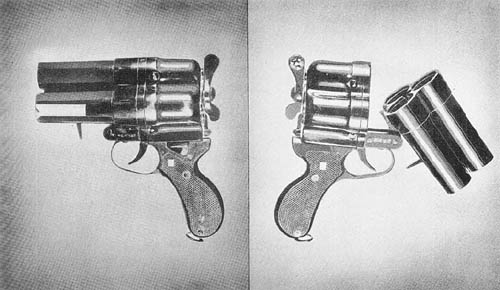
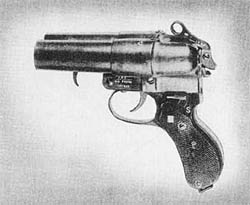 and firing the round in the selected barrel. The three stops on the barrel selector lever are as follows: the left hand stop for the left hand barrel, the central stop for the top barrel, and the right hand stop for the right hand barrel.
and firing the round in the selected barrel. The three stops on the barrel selector lever are as follows: the left hand stop for the left hand barrel, the central stop for the top barrel, and the right hand stop for the right hand barrel.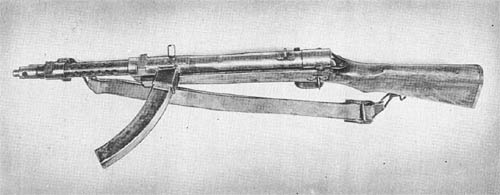
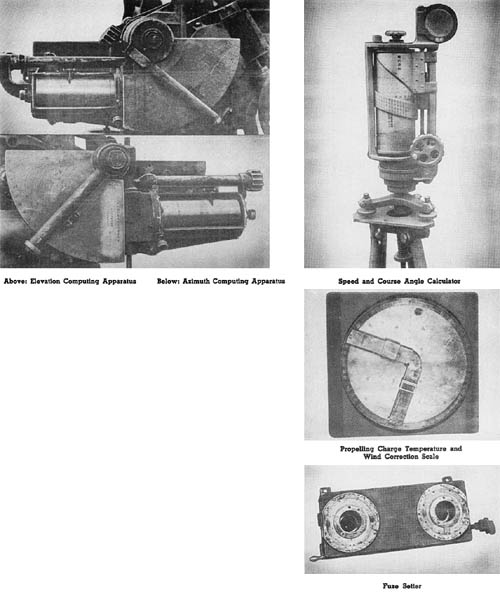
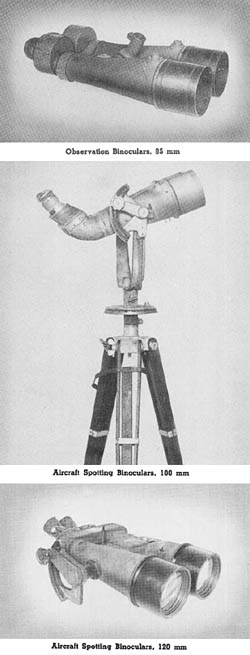 Observation, 85 mm
Observation, 85 mm